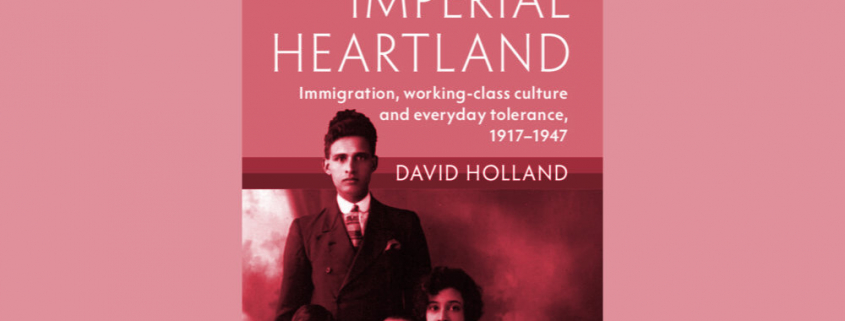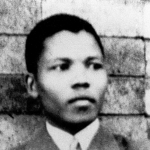Review: Imperial Heartland by David Holland, Cambridge University Press
Hardeep Singh explores a fascinating history that offers complex human realities instead of reductive moralising fables.
Rishi Sunak’s pledge to ‘stop the boats’ – with reference to the migrant channel crossings – is designed to reassure voters that the government sees controlling borders as a policy priority. The policy to shift asylum seekers to Rwanda may be on hold for now, but immigration remains a topic that gets significant airtime – with discussion often hinging around how to distinguish between genuine asylum seekers and those who might be economic migrants.
Much of today’s discussion on historical immigration in Britain focuses on the post-war period – whether it be the ‘Windrush generation’ that settled from the Caribbean, or South Asians from modern-day India, Pakistan and Bangladesh (which broke away from Pakistan in 1971) who settled after the Second World War from the 1950s and 1960s onward. Imperial Heartland provides a fantastic and detailed insight into how pioneering South Asians first settled here with the assistance of working-class Brits during the history of – as the title suggests – imperial Britain.
The book balances the episodic moments of racial conflict in the early inter- and post-war period (like the anti-immigrant port riots of 1919–1920), with insight into a more tolerant world of mixed marriages between the white British working class and the first South Asian settlers. Rather than solely focusing on the prejudice and discrimination these early pioneers indeed faced, Imperial Heartland analyses the evolution of South Asian settlement in modern Britain through an alternative lens of inter-racial social networks.
The focus is primarily (but not exclusively) Sheffield, a place noted by the historian Sidney Pollard to be the ‘largest proletarian city in the country’, whilst also being a ‘centre of all [Chartist] seditious machinations’. During the nineteenth century, the city – also then referred to as the ‘steel capital of the world’ – became a focus of settlement for thousands of migrant workers.
Many of the newcomers who heralded from agricultural heartlands (like the Chhachh district in British India) had been employed as lascar seafarers prior to their arrival – and thus were able to manage the physical demands of the ‘labour-intensive’ industries in Sheffield. Many of the newcomers heralded from zamindar or landowner backgrounds, but they were stereotypically assumed to be ‘impecunious Indians of the agricultural class’. Or, as a church-commissioned investigation on South Asian seafarer migration to Stepney concluded, they ‘come from the poorest strata of their society and many of them can neither read nor write’.
The truth is that whatever the educational attainment, ‘strata’ or levels of assumed wealth, these early migrant pioneers successfully adapted and integrated into their new home, with the aid of baradari (kinship links) and, most remarkably, inter-marriage with local white working-class women.
The majority arrived in Sheffield from the middle of the First World War onward. Such men were employed in various working-class roles, such as boiler firers, miners, lascar seamen, peddlers and hawkers. Holland writes that ‘apart from the Sikhs who arrived in Britain as fare-paying passengers to work as petty traders and manual workers, often in the building trade, many Muslim men shared the common experience of being recruited to work as lascar seafarers by the British merchant marine in British imperial ports east of Suez such as Aden, Karachi, Bombay and Calcutta’. Holland also discusses the ‘myth of return’ in relation to Pakistani arrivals in the second half of the twentieth century – the theory they’d earn enough money and eventually be returning home.
Surprisingly, we learn a few of the new arrivals later diversified into the entertainment business. These included illusionists like Linga Singh, aka the ‘Indian Fakir’, Kashmiri-born Kuda Box with his ‘X-ray eyes’, and Gogia Pasha dubbed the ‘World’s Greatest Magician’, who performed at the Regent Theatre in Sheffield in 1937. Despite mixed marriages becoming the object of moral condemnation at the time, and even violence, during periods of hardship, Holland quotes Caballero and Aspinall, who write, ‘many white Britons, particularly women, were not averse to setting up home with those of a different race nor cared if others did’.
One such couple is Rasool Khan (a Pashtun) and Elsie Peters, who married in 1928. In the 1930s, Rasool and Elsie toured Sheffield’s pubs where Rasool conducted conjuring tricks. Their child, Doreen, remembers how the family sat at the kitchen table making kites – something particularly popular in the Pashtun areas of Punjab, the Northwestern Frontier Province (NWFP) and Afghanistan – that were sold in Sheffield.
But her father’s entrepreneurial spirit didn’t end there. She talks of her earlier memory, of ‘him manufacturing a type of confectionery that he sold around the streets of Sheffield’, something children at the time simply referred to as ‘Indian toffee.’ We learn how the wider introduction of this novel confectionery to Britain’s shores was etched in the memories of none other than former gangland boss Reggie Kray, who described the childhood temptation of praying for ‘a new bicycle or mountain of Indian toffee’. Confectionery (unlike knuckle dusters) isn’t something one would normally associate with the infamous Kray twins.
In making his conclusions, Holland writes:
‘The experience of the Sheffield area’s long-standing non-white presence demonstrates that although the Empire had an influence on the ethnic composition of British society (particularly at the level of the industrial working classes), imperially motivated racism was not a phenomenon that either saturated British society or permeated the lives of working-class Britons.’
Imperial Heartland is a fascinating, illuminating, and nuanced volume providing a refreshing analysis of the history of race, integration, and migration to Britain.
Hardeep Singh is a freelance journalist, deputy director for the Network of Sikh Organisations and assistant editor of The Sikh Messenger. He was a leading member of the Libel Reform Campaign, along with science writer Simon Singh and cardiologist Dr Peter Wilmshurst. He co-authored the report Racialization, Islamophobia and Mistaken Identity: The Sikh Experience. He is a contributor to the Telegraph, the Spectator and The Critic amongst others. He is a member of DDU’s Advisory Council and you can follow him on Twitter: @Singhtwo2
Hardeep’s latest publication, co-authored with Richard Norrie, is We Need to Check Your Thinking: How identity politics is warping police priorities from within, published by Civitas in September 2022. It is available to download here.
Imperial Heartland: Immigration, Working-class Culture and Everyday Tolerance, 1917–1947 by David Holland is published by Cambridge University Press.


